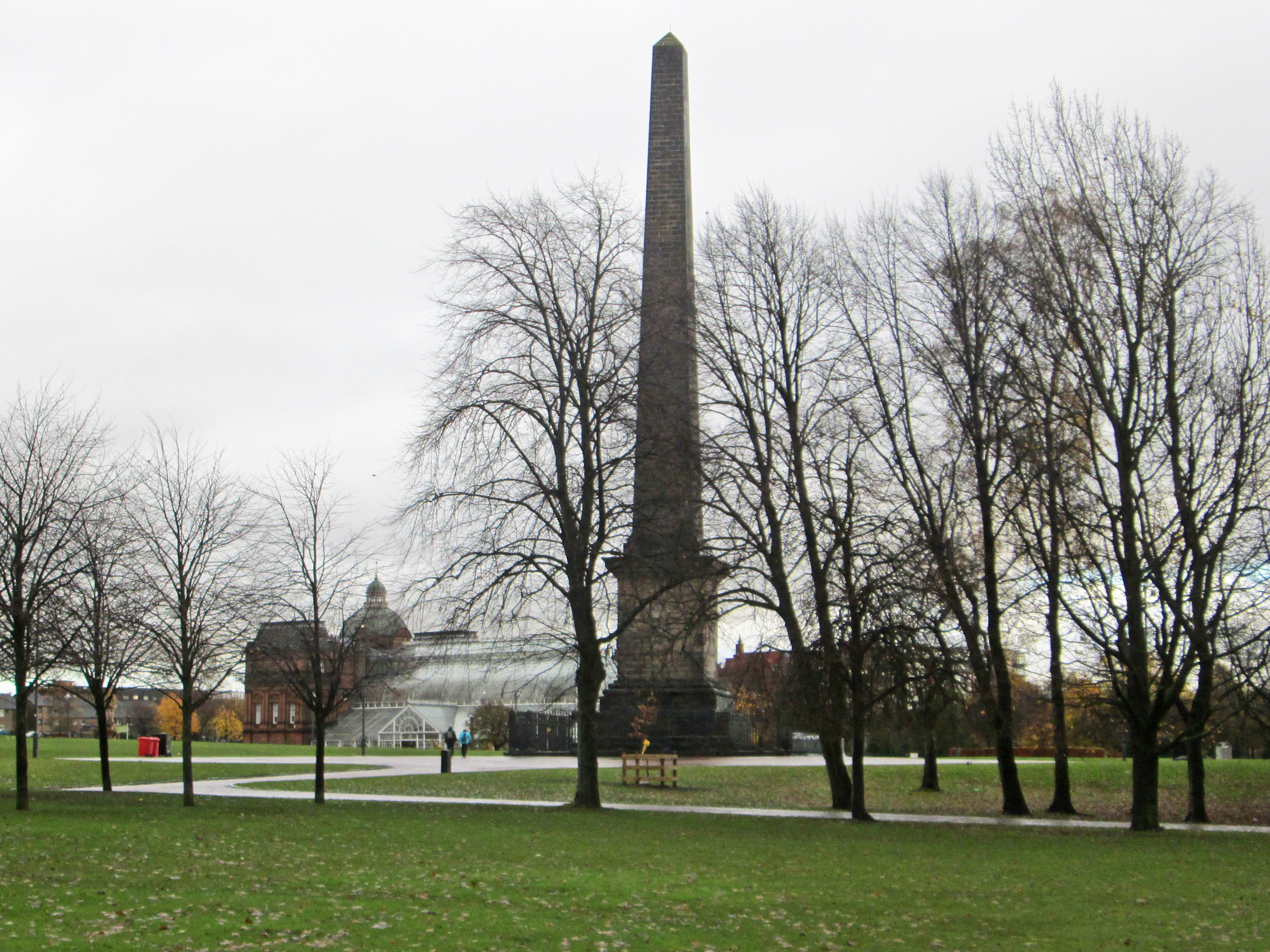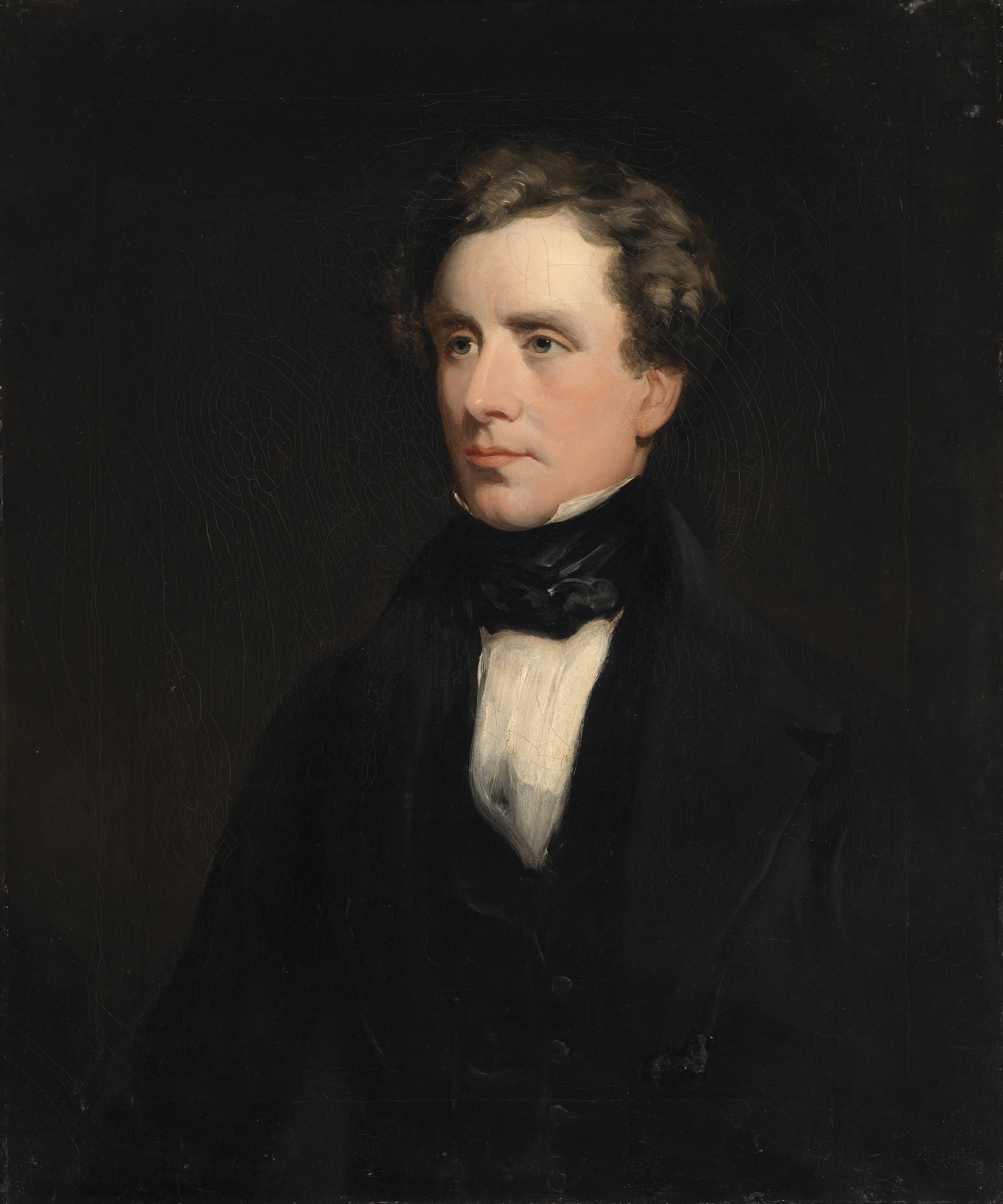|
Glasgow Green
Glasgow Green is a park in the east end of Glasgow, Scotland, on the north bank of the River Clyde. Established in the 15th century, it is the oldest park in the city. It connects to the south via the St Andrew's Suspension Bridge. History In 1450, King James II granted the parkland to Bishop William Turnbull and the people of Glasgow. The Green then looked quite different from the Green today. It was an uneven, swampy area made up of several distinct "greens" (separated by the Camlachie and Molendinar Burns): the High Green; the Low Green; the Calton Green; and the Gallowgate Green. In the centuries that followed, the parkland was used for grazing, washing and bleaching linen, drying fishing nets, and recreational activities like swimming. In 1732, Glasgow’s first ''steamie'', called ''the Washhouse'', opened on the banks of the Camlachie Burn. From 25 December 1745 to 3 January 1746, Bonnie Prince Charlie's army camped in ''Flesher's Haugh'' (privately owned at the ti ... [...More Info...] [...Related Items...] OR: [Wikipedia] [Google] [Baidu] |
Nelson Monument, Glasgow
The Nelson Monument is a commemorative obelisk built in 1806 in honour of Vice Admiral Horatio Nelson, constructed the year after his death at the Battle of Trafalgar. It is located within Glasgow Green, a historic public park in Glasgow, Scotland. It stands tall, and its square plinth is enclosed by cast iron railings. The obelisk was designed by the architect David Hamilton. A plaque in front of the column records that it was the first civic monument in Britain to Nelson's victories, funded by a public subscription. The foundation stone was laid on 1 August 1806, and the monument was constructed by the mason A. Brockett. Soon after its construction, the obelisk was struck by lightning, leaving a long structural crack in the monument: this event was depicted in a painting by John Knox, which is now in the nearby People's Palace museum. In 1965 a tablet was added to the plinth commemorating James Watt's use of Glasgow Green while thinking about an improved steam engine. The ... [...More Info...] [...Related Items...] OR: [Wikipedia] [Google] [Baidu] |
Henry Bell (engineer)
Henry Bell (7 April 1767 – 14 March 1830) was a Scottish engineer who helped to pioneer the development of the steamship. He is mostly widely known for introducing the first successful passenger steamboat service in Europe in 1812. Early career Bell was born at Torphichen, near Bathgate, West Lothian in 1767. He was the fifth son of Patrick Bell and Margaret Easton, themselves members of a family well known at the time as millwrights, builders and engineers. He grew up at the local mill in Torphichen, where developed a working knowledge of water power. Work carried out by members of the Bell family included the design and construction of harbours, bridges, etc., in Scotland and throughout the United Kingdom. Henry Bell was educated at the local parish school and was apprenticed to a stonemason between 1780 and 1783. Three years later, he was briefly apprenticed to his uncle, a millwright. In 1786, he went to work Borrowstounness and learned ship modelling. In 1787, he ... [...More Info...] [...Related Items...] OR: [Wikipedia] [Google] [Baidu] |
Reform Act 1867
The Representation of the People Act 1867, 30 & 31 Vict. c. 102 (known as the Reform Act 1867 or the Second Reform Act) was a piece of British legislation that enfranchised part of the urban male working class in England and Wales for the first time. It took effect in stages over the next two years, culminating in full commencement on 1 January 1869. Before the Act, only one million of the seven million adult men in England and Wales could vote; the Act immediately doubled that number. Further, by the end of 1868 all male heads of household could vote, having abolished the widespread mechanism of the deemed rentpayer or ratepayer being a superior lessor or landlord who would act as middleman for those monies paid ("compounding"). The Act introduced a near-negligible redistribution of seats, far short of the urbanisation and population growth since 1832. The overall intent was to help the Conservative Party, Benjamin Disraeli expecting a reward for his sudden and sweeping backi ... [...More Info...] [...Related Items...] OR: [Wikipedia] [Google] [Baidu] |
William Ewart Gladstone
William Ewart Gladstone ( ; 29 December 1809 – 19 May 1898) was a British statesman and Liberal politician. In a career lasting over 60 years, he served for 12 years as Prime Minister of the United Kingdom, spread over four non-consecutive terms (the most of any British prime minister) beginning in 1868 and ending in 1894. He also served as Chancellor of the Exchequer four times, serving over 12 years. Gladstone was born in Liverpool to Scottish parents. He first entered the House of Commons in 1832, beginning his political career as a High Tory, a grouping which became the Conservative Party under Robert Peel in 1834. Gladstone served as a minister in both of Peel's governments, and in 1846 joined the breakaway Peelite faction, which eventually merged into the new Liberal Party in 1859. He was chancellor under Lord Aberdeen (1852–1855), Lord Palmerston (1859–1865) and Lord Russell (1865–1866). Gladstone's own political doctrine—which emphasised equa ... [...More Info...] [...Related Items...] OR: [Wikipedia] [Google] [Baidu] |
Chartism
Chartism was a working-class movement for political reform in the United Kingdom that erupted from 1838 to 1857 and was strongest in 1839, 1842 and 1848. It took its name from the People's Charter of 1838 and was a national protest movement, with particular strongholds of support in Northern England, the East Midlands, the Staffordshire Potteries, the Black Country, and the South Wales Valleys. The movement was fiercely opposed by government authorities who finally suppressed it. Support for the movement was at its highest when petitions signed by millions of working people were presented to the House of Commons. The strategy employed was to use the scale of support which these petitions and the accompanying mass meetings demonstrated to put pressure on politicians to concede manhood suffrage. Chartism thus relied on constitutional methods to secure its aims, though some became involved in insurrectionary activities, notably in South Wales and in Yorkshire. The People's Ch ... [...More Info...] [...Related Items...] OR: [Wikipedia] [Google] [Baidu] |
Bridgeton, Glasgow
Bridgeton ( sco, Brigtoun, gd, Baile na Drochaid) is a district to the east of Glasgow city centre. Historically part of Lanarkshire, it is bounded by Glasgow Green Glasgow Green is a park in the east end of Glasgow, Scotland, on the north bank of the River Clyde. Established in the 15th century, it is the oldest park in the city. It connects to the south via the St Andrew's Suspension Bridge. History I ... to the west, Dalmarnock to the east and south, Calton to the north-west at Abercromby Street/London Road and Broad street to the north-east. History It started as a small weaving village in 1705, when the third John Walkinshaw marked out a portion of his Goosefauld estate for rent. However, not much interest was shown until 1776 when Rutherglen Bridge was built over the River Clyde and the area became known as ''Bridge Town'' (or ''Brig Toun'' in Scots). The area was incorporated into the city of Glasgow officially in 1846. A major employer was carpet manufacture ... [...More Info...] [...Related Items...] OR: [Wikipedia] [Google] [Baidu] |
Reform Act 1832
The Representation of the People Act 1832 (also known as the 1832 Reform Act, Great Reform Act or First Reform Act) was an Act of Parliament of the United Kingdom (indexed as 2 & 3 Will. IV c. 45) that introduced major changes to the electoral system of England and Wales. It abolished tiny districts, gave representation to cities, gave the vote to small landowners, tenant farmers, shopkeepers, householders who paid a yearly rental of £10 or more, and some lodgers. Only qualifying men were able to vote; the Act introduced the first explicit statutory bar to women voting by defining a voter as a male person. It was designed to correct abuses – to "take effectual Measures for correcting divers Abuses that have long prevailed in the Choice of Members to serve in the Commons House of Parliament". Before the reform, most members nominally represented boroughs. The number of electors in a borough varied widely, from a dozen or so up to 12,000. Frequently the selection of Mem ... [...More Info...] [...Related Items...] OR: [Wikipedia] [Google] [Baidu] |
James Wilson (Scottish Revolutionary)
James Wilson (3 September 1760 – 30 August 1820), commonly known as "Purly Wilson," was a Scottish revolutionary, born in the parish of Avondale in Scotland, a prominent figure in the Radical movement seeking electoral reform. He was a weaver from the town of Strathaven in Lanarkshire, but as the Industrial Revolution affected the weaving trade he had to find alternative work. A free-thinking man, he was sceptical of religion and disliked the government of the day. He read Thomas Paine's ''Rights of Man'' and started to become active in lobbying for political reform. When the Society of the Friends of the People was formed by a group of Whigs he joined the Strathaven branch, although he doesn't appear to have been extremely active initially. However, when it became clear that the local nobleman, the Duke of Hamilton, objected to the aims of the Friends of the People, many members withdrew and Wilson became more active in trying to maintain the local society. The Friends ... [...More Info...] [...Related Items...] OR: [Wikipedia] [Google] [Baidu] |
Radical War
The Radical War, also known as the Scottish Insurrection of 1820, was a week of strikes and unrest in Scotland, a culmination of Radical demands for reform in the United Kingdom of Great Britain and Ireland which had become prominent in the early years of the French Revolution, but had then been repressed during the long Napoleonic Wars. An economic downturn after the wars ended brought increasing unrest, but the root cause was the Industrial Revolution. Artisan workers, particularly weavers in Scotland, sought action to force the government to enact Luddite protective restrictions. Gentry fearing revolutionary horrors recruited militia and the government deployed an apparatus of spies, informers and agents provocateurs to stamp out the movement. A ''Committee of Organisation for Forming a Provisional Government'' put placards around the streets of Glasgow late on Saturday 1 April, calling for an immediate national strike. On Monday 3 April work stopped in a wide area of cen ... [...More Info...] [...Related Items...] OR: [Wikipedia] [Google] [Baidu] |
Food Prices
Food prices refer to the average price level for food across countries, regions and on a global scale. Food prices have an impact on producers and consumers of food. Price levels depend on the food production process, including food marketing and food distribution. Fluctuation in food prices is determined by a number of compounding factors. Geopolitical events, global demand, exchange rates, government policy, diseases and crop yield, energy costs, availability of natural resources for agriculture, food speculation, changes in the use of soil and weather events have a direct impact on the increase or decrease of food prices. The consequences of food price fluctuation are multiple. Increases in food prices, or agflation, endangers food security, particularly for developing countries, and can cause social unrest. Increases in food prices is related to disparities in diet quality and health, particularly among vulnerable populations, such as women and children. Food prices ... [...More Info...] [...Related Items...] OR: [Wikipedia] [Google] [Baidu] |
Corn Laws
The Corn Laws were tariffs and other trade restrictions on imported food and corn enforced in the United Kingdom between 1815 and 1846. The word ''corn'' in British English denotes all cereal grains, including wheat, oats and barley. They were designed to keep corn prices high to favour domestic producers, and represented British mercantilism. The Corn Laws blocked the import of cheap corn, initially by simply forbidding importation below a set price, and later by imposing steep import duties, making it too expensive to import it from abroad, even when food supplies were short. The House of Commons passed the corn law bill on March 10, 1815, the House of Lords on March 20 and the bill received Royal assent on March 23, 1815. The Corn Laws enhanced the profits and political power associated with land ownership. The laws raised food prices and the costs of living for the British public, and hampered the growth of other British economic sectors, such as manufacturing, by reducin ... [...More Info...] [...Related Items...] OR: [Wikipedia] [Google] [Baidu] |
Radicalism (historical)
Radicalism (from French , "radical") or classical radicalism was a historical political movement representing the leftward flank of liberalism during the late 18th and early 19th centuries and a precursor to social liberalism, social democracy and modern progressivism. Its earliest beginnings were found in Great Britain with the Levellers during the English Civil War, and the later Radical Whigs. During the 19th century in the United Kingdom, continental Europe, and Latin America, the term ''radical'' came to denote a progressive liberal ideology inspired by the French Revolution. Historically, radicalism emerged in an early form with the French Revolution and the similar movements it inspired in other countries. It grew prominent during the 1830s in the United Kingdom with the Chartists and Belgium with the Revolution of 1830, then across Europe in the 1840s–1850s during the Revolutions of 1848. In contrast to the social conservatism of existing liberal politics, rad ... [...More Info...] [...Related Items...] OR: [Wikipedia] [Google] [Baidu] |
.jpg)







_Wilson%2C_1760_-_1820._Radical_Reformer.jpg)



